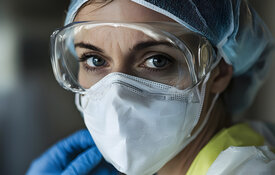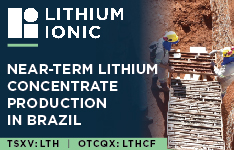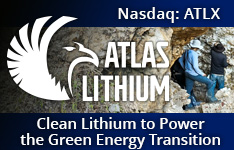Neumora Therapeutics Inc.'s (NMRA:NASDAQ) navacaprant is "back in pole position" for becoming an approved treatment for major depressive disorder because Johnson & Johnson (JNJ:NYSE) aborted development of aticaprant, reported H.C. Wainwright & Co. Analyst Douglas Tsao in a March 7 research note.
"Navacaprant's differentiated pharmacology gives us confidence in its ultimate success," Tsao wrote.
1,084% Implied Return
H.C. Wainwright has an $18 per share price target on the Massachusetts, U.S.-based biopharma whose current share price is about $1.52, Tsao noted.
The target implies a potential return for investors of 1,084%.
Neumora remains a Buy. Its market cap is $246 million.
How The Two Differ
Both navacaprant and aticaprant are kappa opioid receptor agonists (KORAs), meaning they block kappa opioid receptors (KORs) in the brain, but these two drugs have differences.
Navacaprant is being developed as a standalone treatment for major depressive disorder whereas aticaprant is being developed as an adjunct to a selective serotonin reuptake inhibitor (SSRI) and at lower doses.
According to Tsao, aticaprant has less selectivity and less demonstrated efficacy. For example, aticaprant's discrete impact on anhedonia, a loss of interest or pleasure, was modest at 0.7 points on a placebo-adjusted basis and not statistically significant. Top anhedonia experts believe it is better to not use SSRIs in treating this condition at all.
"We remain confident in navacaprant's mechanism, especially in improving anhedonia, which represents high unmet need," wrote the analyst.
As for their kappa opoid receptor (KOR) binding specificity, Navacaprant's is about 310x, and aticaprant's is about 30x. This is important because the higher this number, the more selective the compound is for KOR, so it binds with greater affinity to KORs and with less affinity to other opioid receptors like mu. According to key opinion leaders, a higher KOR binding specificity allows for a wider dosing window and lower side effects, especially the risk of abuse and dependency. A KOR interacting with affinity to a mu opioid receptor (MOR) could worsen symptoms of depression.
JNJ's Move a Surprise
Tsao reported that Johnson & Johnson had been advancing aticaprant aggressively. It started the VENTURA-5 and VENTURA-7 studies last year, which implied the earlier Ventura trials were successful. This year, in an update of its pipeline, JNJ indicated it planned to file a new drug application for aticaprant in 2025. So the news it was curtailing the drug's development was surprising to Tsao and others, he wrote.
When the readout of Neumora's KOASTAL-1 trial, the first of three studies of navacaprant in major depressive disorder, was negative, JNJ's positive signs regarding aticaprant helped prop up investor sentiment about the KORA mechanism. Now, due to the aticaprant news, this sentiment likely is to be damped somewhat, noted the analyst.
"That said, it fundamentally doesn't change our confidence regarding the ultimate success for navacaprant," Tsao commented.
First-to-Market Potential
AbbVie Inc. (ABBV:NYSE) gained a KORA via its acquisition of Cerevel Therapeutics Holdings Inc. but only just started a Phase 2 clinical trial in bipolar I or II disorder, Tsao explained. Earlier this week Neumora paused its Phase 2 study in bipolar disorder to prioritize resources for its KOASTAL program in MDD; the study put on hold likely will resume once navacaprant has a success in KOASTAL. Now, with aticaprant out of the picture, Neumora is positioned to become first to market with a KORA for major depressive disorder.
However, Neumora has work to do, noted Tsao. It paused KOASTAL-2 and KOASTAL-3 as well to implement some changes to these after analyzing the KOASTAL-1 data. Overall, it aims to improve the quality of the trial patients. The biopharma is scaling back the number of clinical sites involved in the study and limiting sites to ones that have participated in other positive studies in major depressive disorder. The KOASTAL-1 data showed these sites performed much better than the others. Neumora hypothesized that these sites with experience can differentiate between patients with situational depression rather than major depressive disorder and better screen out "professional" patients, ones for whom fighting their disorder has become a full-time job.
Neumora also intends to another medical monitoring approach, specifically SAFER developed by the Massachusetts General Hospital Clinical Trials Network and Institute, to ensure patient quality. Also, the company will use a second screening database, that of Verified Clinical Trials, to better exclude professional patients.
New Timeline for Results
The topline data readouts have been pushed back, Tsao reported. KOASTAL-3 results now are expected in Q1/26 and KOASTAl-2's in Q2/26.
Neumora has the option to over-enroll the KOASTAL-2 and KOASTAL-3 studies by up to 25%, Tsao noted. He expects the biopharma will take advantage of this given the operational changes being implemented to the studies.
| Want to be the first to know about interesting Biotechnology / Pharmaceuticals investment ideas? Sign up to receive the FREE Streetwise Reports' newsletter. | Subscribe |









































